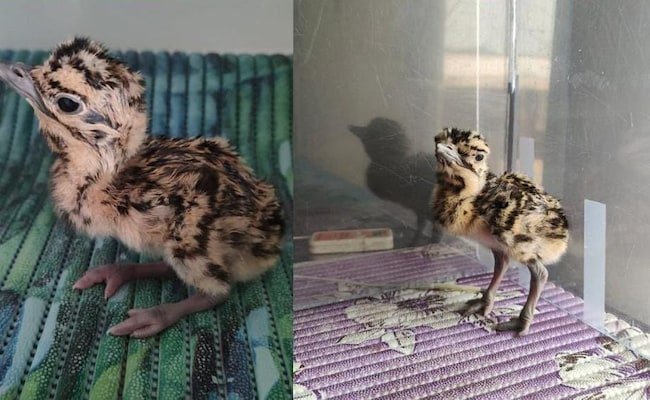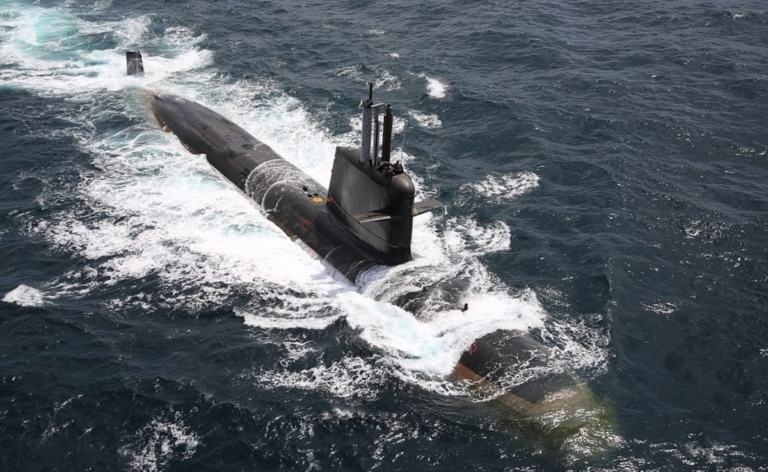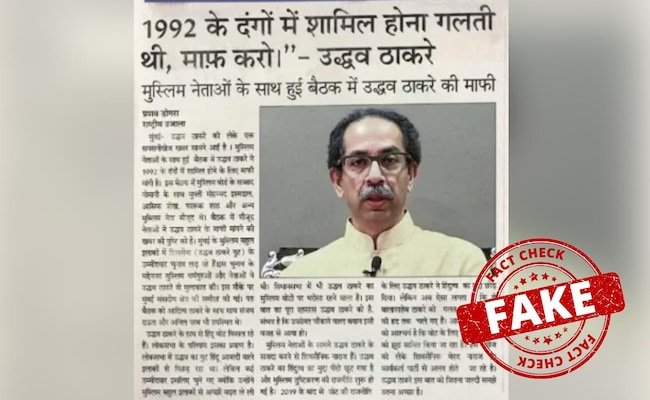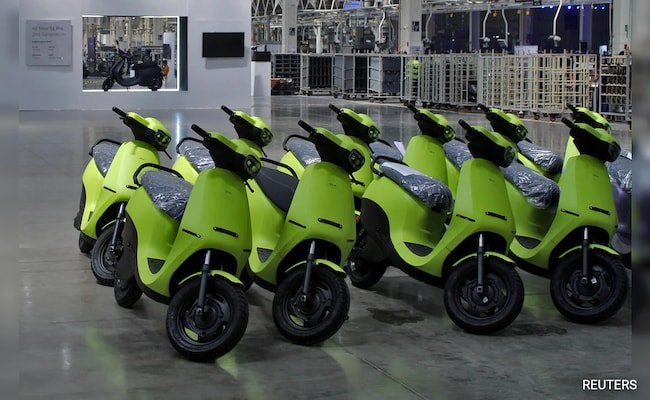

The Great Indian Bustard chick born through artificial insemination.
New Delhi:
He is small and brown with dark brown speckles. He walks around, flapping his wings, yearning to fly. His tiny feet want to explore the world. He is barely a month old and has helped scientists take a giant leap forward in the conservation efforts program. He is the first Great Indian Bustard chick born through artificial insemination.
READ | Supreme Court Appoints Committee To Look Into Preservation Of Great Indian Bustard
Scientists at the National Conservation Breeding Centre in Jaisalmer hatched a Great Indian Bustard chick.
The process involved collecting the sperm of 3-year-old male bustard Sudha and inseminating a female called Toni. The chick was successfully hatched after the female laid an egg on September 24.
The great Indian bustard is a highly endangered bird species found in the Thar area of Rajasthan. Today, only 173 birds are left, of which, 128 are found in the wild, while others are bred in captivity.
In 2018, the Wildlife Institute of India, in collaboration with the Government of India, Government of Rajasthan and Forest Department, established the Great Indian Bustard Artificial Breeding Center in Jaisalmer under the Bustard Recovery Program. The programme aims to increase the Great Indian Bustard population.
“The WII scientists had been trained at the International Fund for Houbara Conservation in Abu Dhabi, dedicated to the restoration and preservation of the Houbara bustard. They then carried out the Artificial Insemination program in Jaisalmer,” said P K Upadhyay, Chief Wildlife Warden.
Environmentalist Professor Shyam Sundar Meena drew parallels between artificial insemination and IVF. Calling it a “big success”, she said, “Environment lovers are very happy about this. I congratulate everyone on this good news.”
READ | Supreme Court Urges Centre To Plan Saving Endangered ‘Great Indian Bustard’




